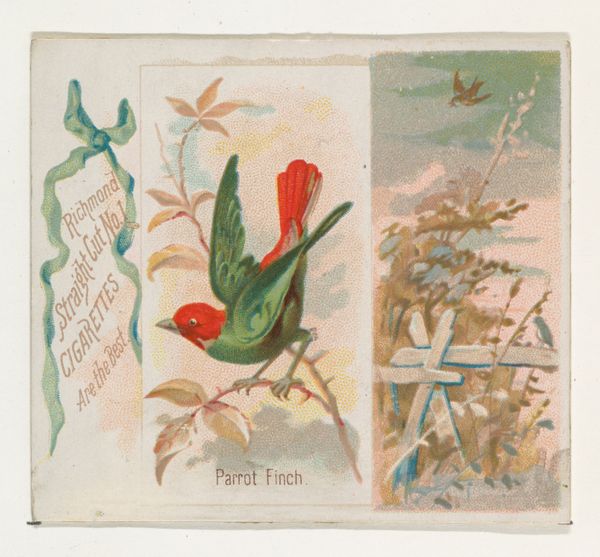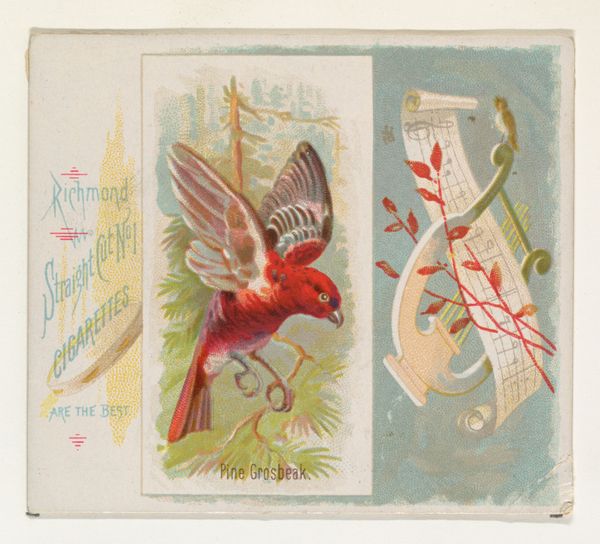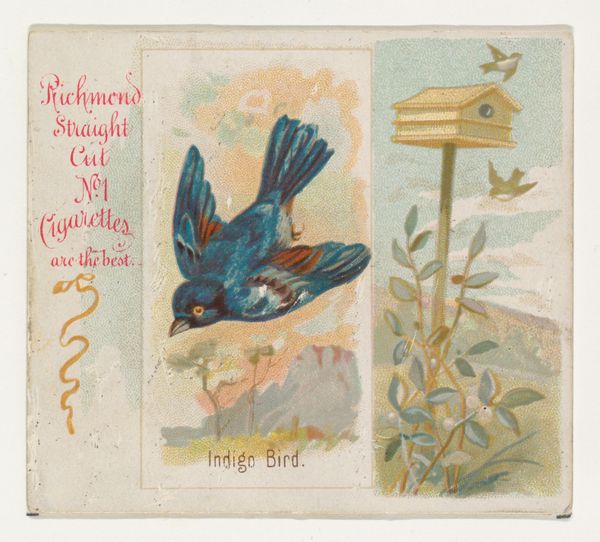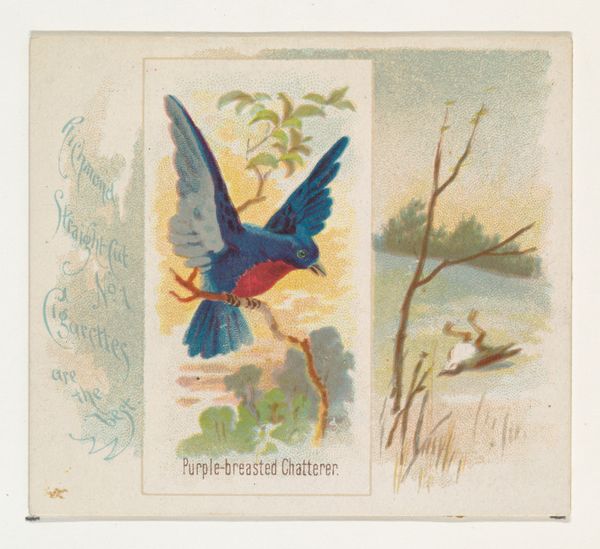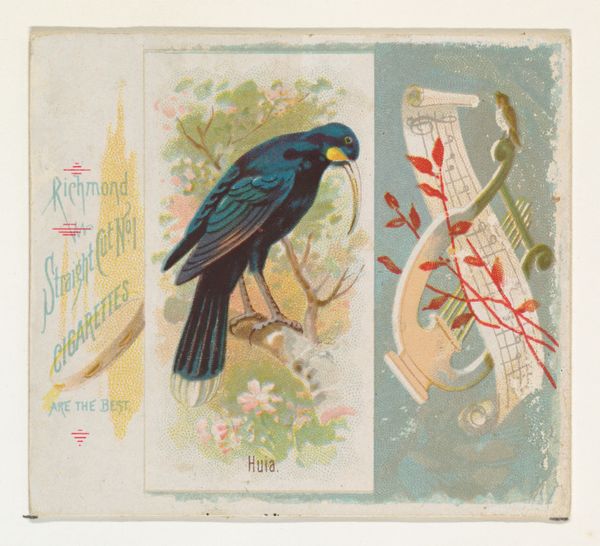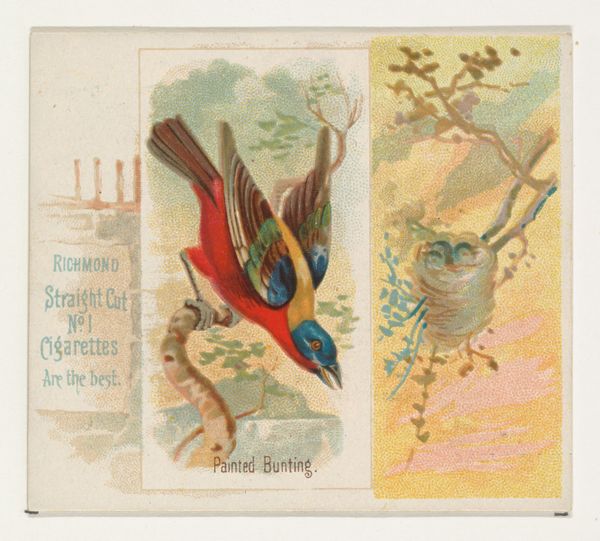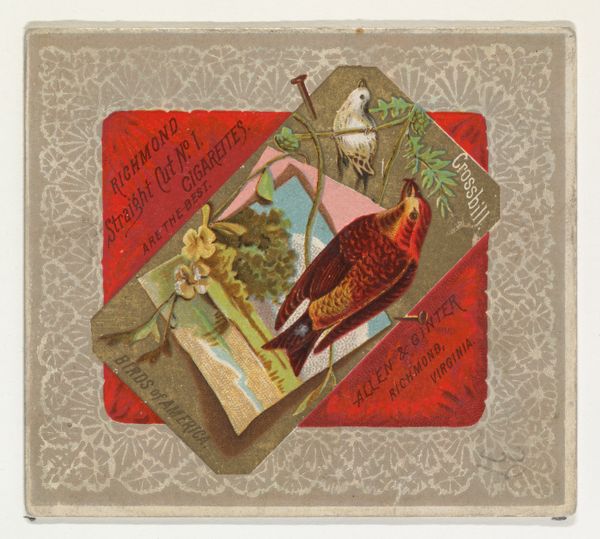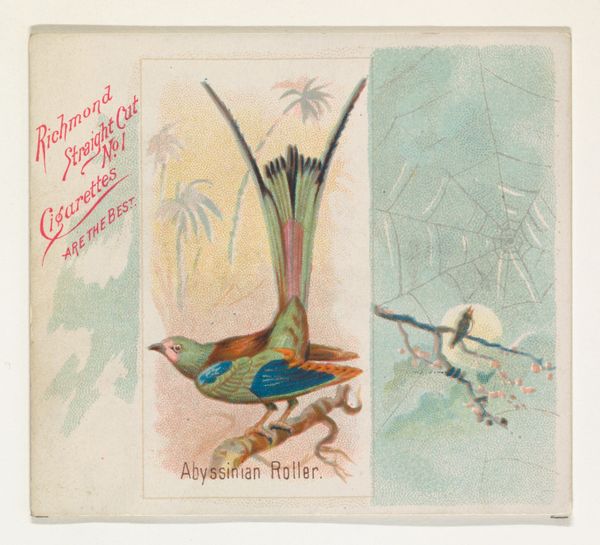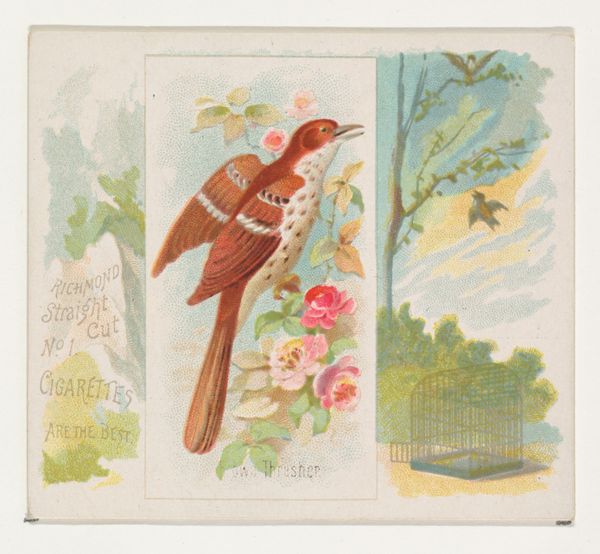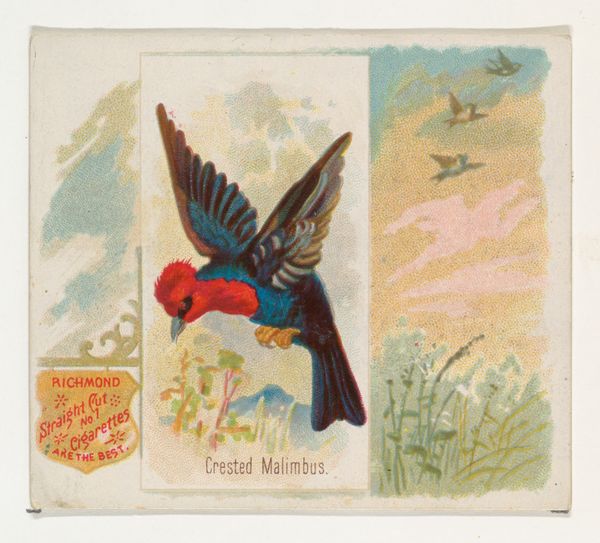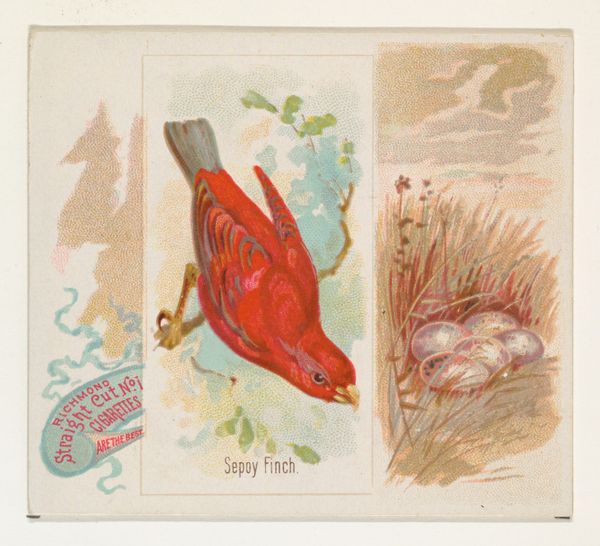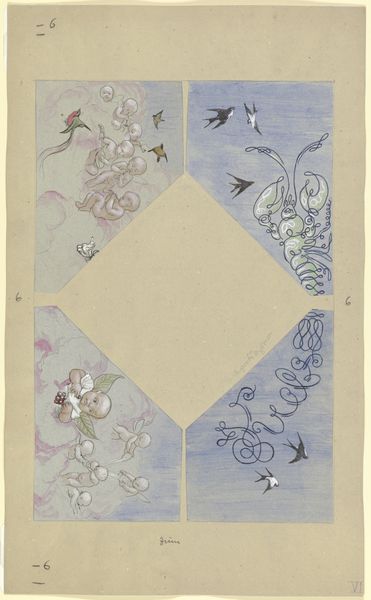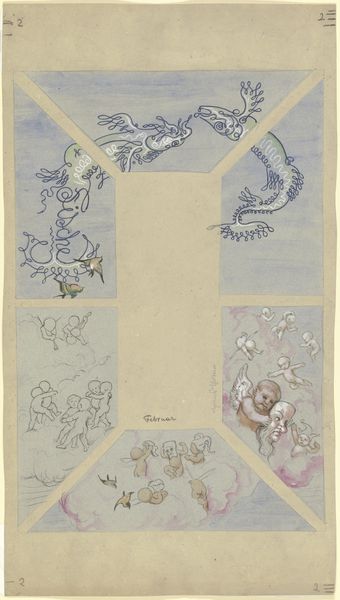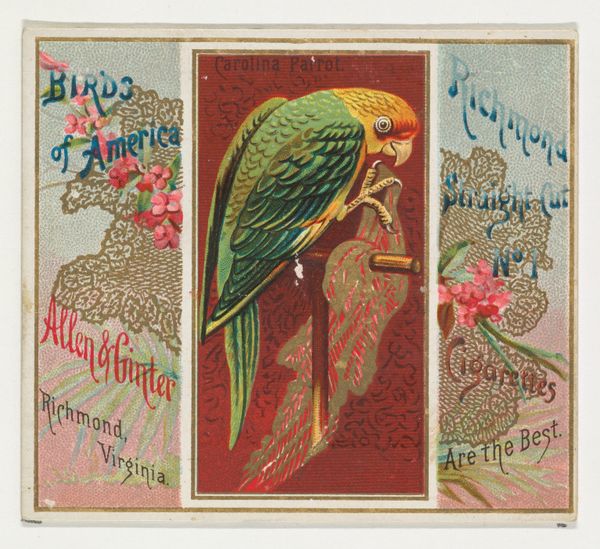
Persian Starling, from the Song Birds of the World series (N42) for Allen & Ginter Cigarettes 1890
0:00
0:00
Dimensions: Sheet: 2 7/8 x 3 1/4 in. (7.3 x 8.3 cm)
Copyright: Public Domain
Editor: This is "Persian Starling," a print from 1890 created for Allen & Ginter Cigarettes. It's a sweet watercolor, very delicate and charming...but the cigarette advertising seems so incongruous now. What does it say to you? Curator: It speaks volumes about the historical context of art and commerce. Consider the purpose of these "Song Birds of the World" cards. They were essentially trading cards included in cigarette packs, aiming to cultivate brand loyalty and, importantly, shape public perception. Think about the power of imagery at this time – pre-television, pre-internet. Editor: So it’s less about art for art's sake, and more about marketing? Curator: Exactly. These cards participated in a broader cultural phenomenon of exoticism and collecting. The "Orient," here Persia, became a desirable, marketable fantasy. But even the classification "Song Birds of the World" implies an attempt to organize and, perhaps, control nature, fitting into a wider colonial project. Who decides what constitutes a "songbird," and who gets to collect and classify them? Editor: That makes me think about museums, too. Aren't they also about collecting and classifying the world? Curator: Precisely! Museums and exhibitions displayed and promoted objects from other cultures, thus shaping the public's understanding. So these cards, inexpensive as they were, reflect the cultural power dynamics of the time. Also notice the *ukiyo-e* style composition in right part of the card... were they intending to show sophistication or were they following market demand? Editor: That's a good point; I wouldn't have thought about all that just looking at the pretty bird! It really puts a different spin on it. Curator: And hopefully demonstrates how art is rarely created in a vacuum. Examining the historical, social, and even commercial context unveils fascinating layers of meaning.
Comments
No comments
Be the first to comment and join the conversation on the ultimate creative platform.
